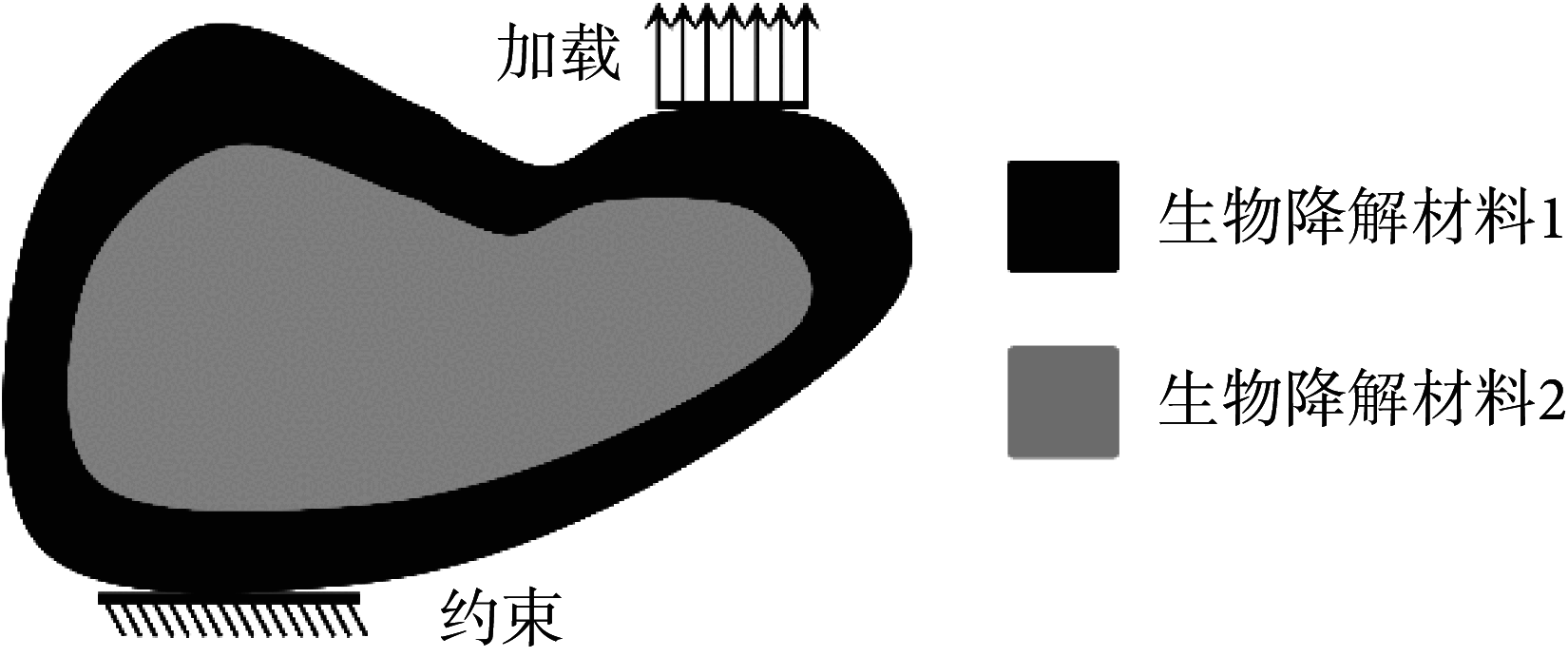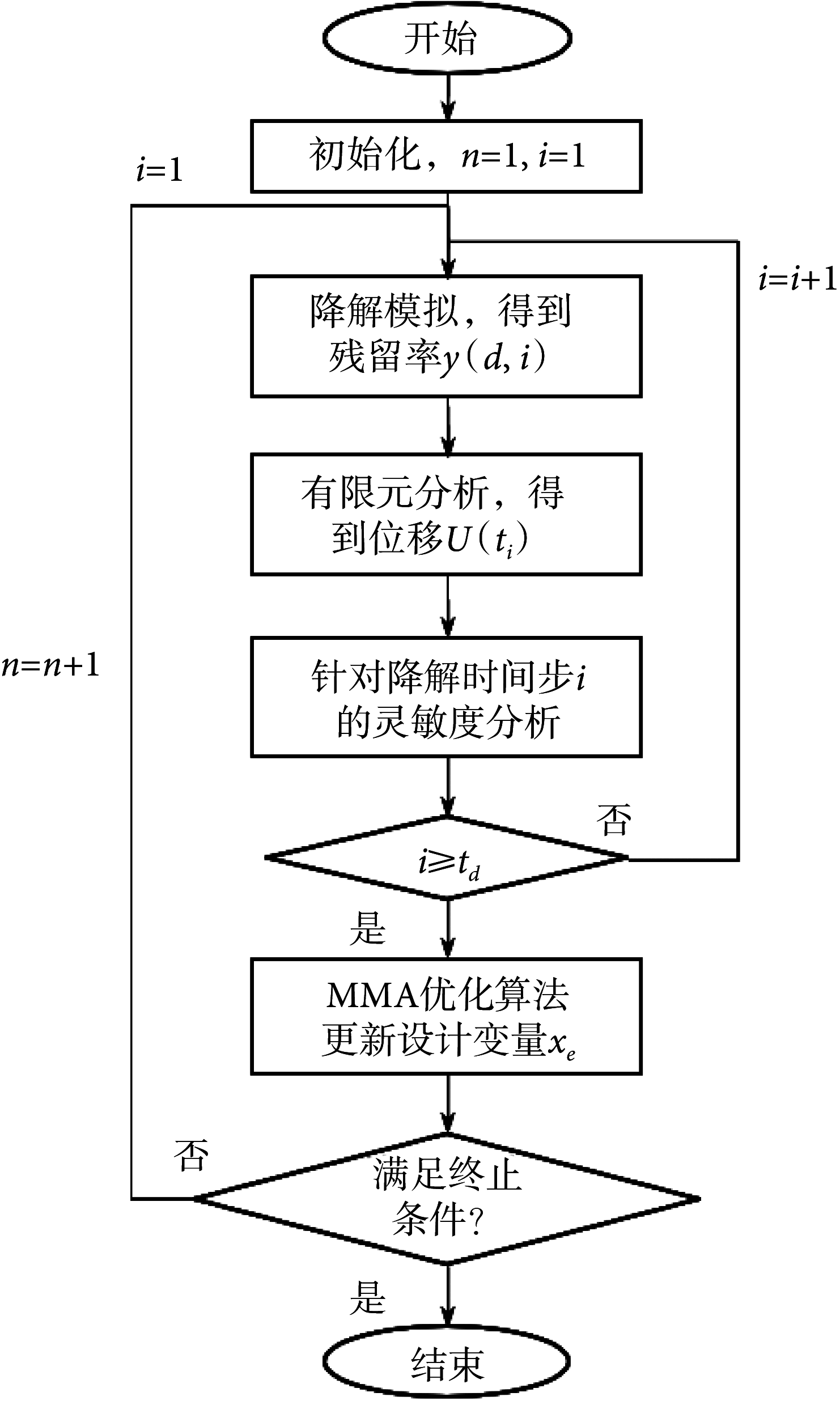[Structural design and evaluation of bone remodeling effect of fracture internal fixation implants with time-varying stiffness]
- PMID: 38932547
- PMCID: PMC11208653
- DOI: 10.7507/1001-5515.202311037
[Structural design and evaluation of bone remodeling effect of fracture internal fixation implants with time-varying stiffness]
Abstract
The stiffness of an ideal fracture internal fixation implant should have a time-varying performance, so that the fracture can generate reasonable mechanical stimulation at different healing stages, and biodegradable materials meet this performance. A topology optimization design method for composite structures of fracture internal fixation implants with time-varying stiffness is proposed, considering the time-dependent degradation process of materials. Using relative density and degradation residual rate to describe the distribution and degradation state of two materials with different degradation rates and elastic modulus, a coupled mathematical model of degradation simulation mechanical analysis was established. Biomaterial composite structures were designed based on variable density method to exhibit time-varying stiffness characteristics. Taking the bone plate used for the treatment of tibial fractures as an example, a composite structure bone plate with time-varying stiffness characteristics was designed using the proposed method. The optimization results showed that material 1 with high stiffness formed a columnar support structure, while material 2 with low stiffness was distributed at the degradation boundary and inside. Using a bone remodeling simulation model, the optimized bone plates were evaluated. After 11 months of remodeling, the average elastic modulus of callus using degradable time-varying stiffness plates, titanium alloy plates, and stainless steel plates were 8 634 MPa, 8 521 MPa, and 8 412 MPa, respectively, indicating that the use of degradable time-varying stiffness plates would result in better remodeling effects on the callus.
理想的骨折内固定植入物刚度应具有随时间变化的性能,使骨折在不同愈合阶段都能产生合理的力学刺激,可降解材料可以满足这一性能。考虑到材料降解过程的时间依赖性,提出一种具有时变刚度的骨折内固定植入物复合结构拓扑优化设计方法。采用相对密度和降解残留率描述两种具有不同降解速度和弹性模量的材料分布和降解状态,建立降解模拟-力学分析耦合数学模型;基于变密度法设计双材料复合结构,使之具有时变刚度特性。以胫骨骨折治疗用的接骨板为例,采用所提出方法设计具有时变刚度特性的复合结构接骨板,优化结果显示高刚度的材料1形成柱状的支撑结构,低刚度的材料2分布在降解边界和内部。利用骨重塑模拟模型对优化后的接骨板进行评估,经过11个月重塑,使用可降解时变刚度接骨板、钛合金接骨板和不锈钢接骨板的骨痂平均弹性模量分别为8 634、8 521、8 412 MPa,表明使用可降解时变刚度接骨板可使骨痂取得更好的重塑效果。.
Keywords: Biodegradation; Bone remodeling; Composite structure; Time-varying stiffness; Topology optimization.
Conflict of interest statement
利益冲突声明:本文全体作者均声明不存在利益冲突。
Figures









References
-
- Agarwal S, Curtin J, Duffy B, et al Biodegradable magnesium alloys for orthopaedic applications: A review on corrosion, biocompatibility and surface modifications. Mater Sci Eng C. 2016;68(1):948–963. - PubMed
-
- Markert Z B Numerical simulation of the tissue differentiation and corrosion process of biodegradable magnesium implants during bone fracture healing. Zamm-Z Angew Math Me. 2018;98(12):2223–2238. doi: 10.1002/zamm.201700314. - DOI
-
- Zheng Y F, Gu X N, Witte F Biodegradable metals. Mat Sci Eng R. 2014;77:1–34. doi: 10.1016/j.mser.2014.01.001. - DOI
Publication types
MeSH terms
Substances
LinkOut - more resources
Full Text Sources
Medical
